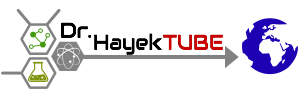This video is about Chemical Kinetics and explains in details the Reaction Rate Laws. After watching this video, you should be able to:
- State the postulates of collision theory.
- Understand that according to the Collision Model, molecules must collide in order to react, in addition they must be with the correct orientation and with sufficient energy.
- Understand that Activation Energy (Ea) is the minimum amount of energy required to have an effective collision to convert atoms or molecules into the activated complex (transition state).
- State the criteria for a chemical reaction to occur.
- Derive alternative forms of the Arrhenius Equation.
- Solve problems relating to activation energy.
- Plot ln(k) versus 1/T to determine the energy of activation for a given reaction.
- Know that a catalyst is a substance that speeds up a reaction without being consumed itself.
- Understand the effects of catalysis.
- Know that catalysts lower the activation energy but do not change ΔH for the reaction.
- Know that catalysts provide shorter reaction pathways.
- The two types of catalyst: Heterogeneous and homogeneous.
